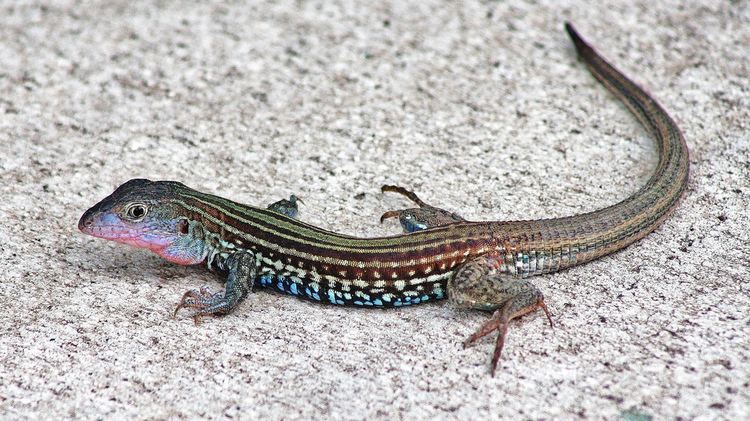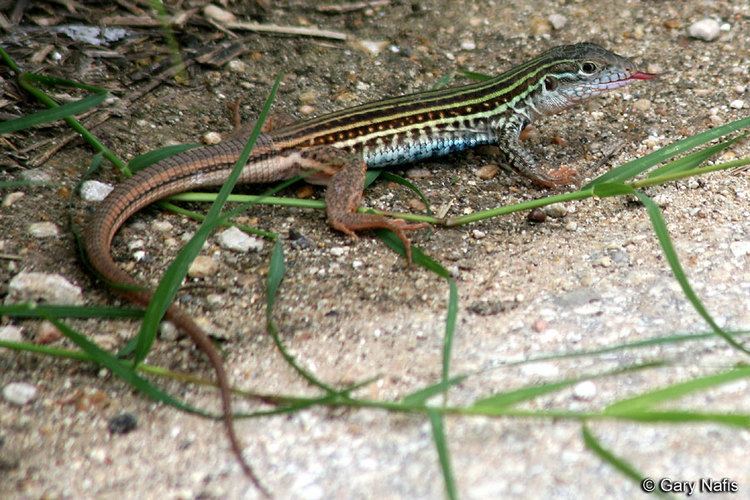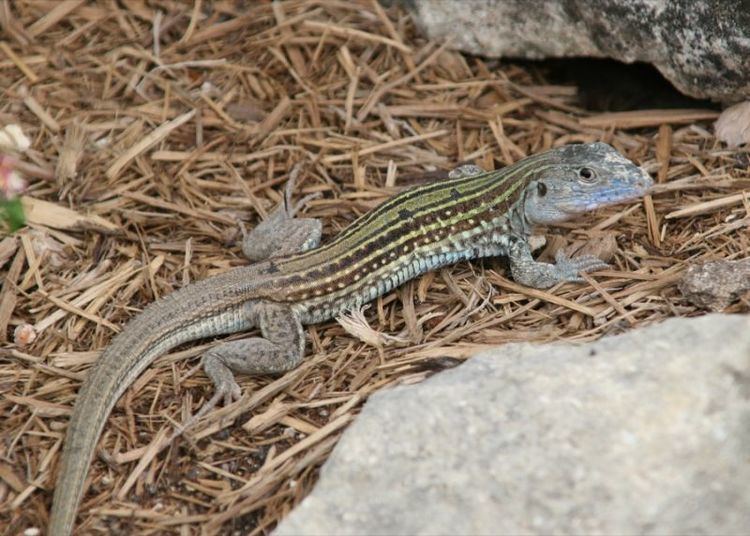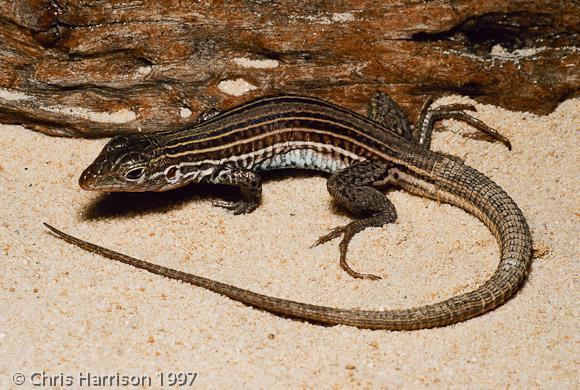Subphylum Vertebrata Suborder Sauria Scientific name Cnemidophorus gularis Rank Species | Phylum Chordata Infraorder Scincomorpha Higher classification Cnemidophorus | |
 | ||
Similar Aspidoscelis, Cnemidophorus, Reptile, Teiidae, Chihuahuan spotted w | ||
Texas spotted whiptail lizard eating
The Texas spotted whiptail (Cnemidophorus gularis or Aspidocelis gularis) is a species of long-tailed lizard native to the southern United States, in Texas, New Mexico, and Oklahoma, and northern Mexico in Coahuila, Nuevo León, Tamaulipas, San Luis Potosí, Querétaro, and Veracruz.
Contents
- Texas spotted whiptail lizard eating
- Reptile lizard texas spotted whiptail
- Description
- Behavior habitat
- Reproduction
- Subspecies
- Etymology
- References

Reptile lizard texas spotted whiptail
Description

Texas spotted whiptails grow 6.5 to 11 inches (17 to 28 cm) in total length (including tail). They are typically a tan brown or green-brown in color, with a pattern of seven distinct grey or white stripes that run the length of the body, and stop at the tail, with light colored spots along the sides. The underside is uniformly white in color. Males often have a red-colored throat, blue belly, and black or blue patches on the chest, while females have only a pink-colored throat. The tail is long compared to the body, usually close to three times the body length. The tail is usually a uniform peach or tan color.
Behavior & habitat

C. gularis are diurnal and insectivorous. They are highly active and found in a wide variety of habitats, from grassland and semi-arid regions, to canyons and rocky terrain, typically not far from a permanent water source.
Reproduction

Breeding of sexually mature C. gularis occurs in the spring, and a clutch of 1-5 eggs is laid in the early summer.
Subspecies
Some sources list six subspecies of the Texas spotted whiptail:

Etymology
The subspecific name, rauni, is in honor of American zoologist Gerald George Raun (born 1932).

